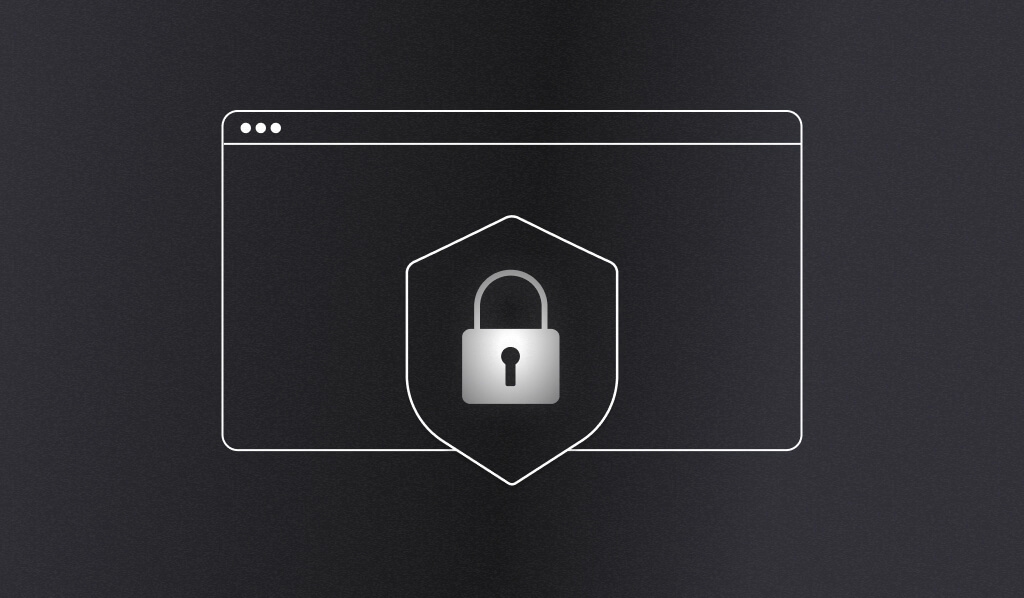
The world has never been more connected, creating unprecedented problems in the field of cybersecurity. The frequency of cyberattacks is rising, making it increasingly challenging to keep networks secure.
For businesses, the financial impact can be devastating. Cybercrime is estimated to grow 15 percent annually and projected to cost $10 trillion by 2025. According to IBM's Cost of a Data Breach report, the average cyberattack costs an organization $8.6 million.
This growing threat to organizations calls for a shift in focus regarding our security mindset, specifically from static network perimeters to users, assets, and resources. This is where zero trust comes in.
The idea is simple: Zero trust assumes that every user has malicious intent, regardless of rank or position within your organization. It means treating all users as potential attackers who might try to steal sensitive data or compromise your systems. It involves analyzing each user's behavior and taking action based on what you find out about them: "Never trust; always verify."
In mitigating potential security vulnerabilities, zero trust focuses on solid authentication and encryption strategies for security-critical applications and minimizing the attack surface of a system by locking down the environment.
The fundamental principles of zero trust are the following:
- Don't trust your users: Users aren't to be trusted simply because they're currently inside the network. In other words, don't rely on your security perimeter to keep you safe.
- Don't assume your connections are secure: A zero-trust security strategy assumes that all devices connected to the corporate network are untrustworthy and can be used to attack the network.
- Risk assessment should be constant: Use identity information instead of IP addresses to verify users before they can access your services and data. Ensure the devices clients use to access your network have been vetted so they can't be used as tools in a cyberattack. To strengthen dynamic assessment, you can use multifactor authentication (MFA) and just-in-time (JIT) access.
- Segment your network: Focusing your defenses on the traditional network perimeter is not enough. Data and corporate assets must be protected using a micro-segmented security system to prevent threats from spreading through the network laterally.
- Minimize your attack surface: Reducing the impact of a potential breach is the best way to prevent breaches. It also gives systems and people more time to respond in case of a successful attack.
This article explores the concept of zero trust and explains how you can use it to improve your organization's security.
Why Is Zero Trust Important?
The security model that's been in use for several decades has been built around the network perimeter. A line separates your network's "secure" portion from the "unsecured" part. The traditional "Trust but verify" approach to network protection is like a house full of unlocked doors. Once you get in, you can walk through any other open door. While "Trust but verify" seemed to work for a long time, there are several reasons why it no longer does:
- Once a person has successfully connected, they're free to roam the network, putting the organization at risk of lateral movement attacks.
- It's difficult for organizations to gain visibility into what employees are doing in their systems since they don't monitor what happens once employees log in to their systems.
- There has been an explosion in the number of endpoints and connected devices because of remote working. Such connected devices are a common starting point of cyberattacks like ransomware.
- Organizations are increasingly adopting a cloud-first strategy, becoming more dependent on third-party vendors. Many companies are now using containers and microservice architectures, introducing new cyber risks.
In light of the above, it's clear that "Trust but verify" is no longer a reliable security model. Instead, organizations have been moving towards zero trust, also known as "Never trust; always verify"—a set of principles that flip the previous model on its head by treating every user as a potential attacker. By one estimate, 60 percent of businesses will shift to zero trust networks by 2025.
Under the zero trust model, techniques such as MFA, least privilege access, and proxy architecture fill the gaps left by "Trust but verify."
Zero trust helps to do the following:
- Identify user and resource access needs based on business objectives
- Define policies that govern resources based on their role in the organization's architecture and risk tolerance
- Monitor all activity within the network
Here are some common examples of attacks and malicious methods cybercriminals use against organizations and how zero trust can help you stay one step ahead.
Reconnaissance
One standard method used in cyberattacks is reconnaissance or surveillance. It's where criminals plan their attacks by closely monitoring your organization's networks, applications, and security systems. Information is gathered on sensitive data linked to your business, such as servers, usernames, sub-domains, security policies, operating systems, and security patches.
Zero trust can be effective against reconnaissance. The security model enforces continuous user and device verification while hiding server visibility. Applying zero trust principles to application access—for example, by implementing MFA and Just-In-Time (JIT) access—can restrict access to your network and therefore raise the bar for your security measures.
Lateral Movement
Lateral movement is a technique used by cyberattackers to gain access to a network and then move through the compromised environment in search of sensitive data and other high-value assets. Once inside the network, an attacker typically maintains ongoing access by moving through the compromised environment and obtaining increased privileges.
Zero trust also reduces the possibility of lateral network movement and hides vulnerabilities in the network (using proxy architecture), preventing hackers from quickly obtaining information about a company's devices.
The zero trust model is the best way to deal with lateral movement because it minimizes available privilege and maximizes network segmentation. Traditional security controls like firewalls, IPs, and antivirus tools are less relied upon. Instead, zero trust focuses on network segmentation with direct user-to-app and app-to-app connections.
Trust is tested as every request is inspected and authenticated, and permissions are assessed before granting authorization. Context changes like "location" or "data access" trigger a constant reassessment of trust, which makes it hard for attackers to move laterally in your network.
Zero trust can thus help you minimize the lateral movement of attackers by shifting focus from a perimeter-based approach to a data-driven approach. The idea is never to trust a user; always verify.
Ransomware Attacks
Over the past few years, ransomware attacks have continued to put companies at risk of data breaches. There has been a 500 percent rise in encrypted ransomware since 2020. Such attacks are estimated to cause $42 billion in damages by 2024.
You can't prevent ransomware attacks with a single solution. But you can improve your chances of success by using a layered approach to security that includes user identity and access management (IAM), constant assessment, threat inspection, and limiting access to critical resources.
The zero trust framework focuses on eliminating human error as well as your system's attack surface, reducing the likelihood of cyberattacks like ransomware.
Anyone who wants access to sensitive information must go through an IAM system before accessing any data. In other words, no one gets access to anything unless they have permission first.
How Zero Trust Principles Can Strengthen Your Organization's Security Strategy
As you may have realized by now, zero trust is more of a set of guiding principles rather than a specific technology. In other words, it's not a matter of implementing a new set of tools; it requires a cultural shift within your organization.
You can use zero trust to build an authentication and authorization system that works across enterprise resources, including servers, applications, and desktops.
Your security team should look to tightly integrate zero trust network access solutions like MFA, JIT, and least privilege access to achieve the following:
- Better access management
- Protecting your organization from data breaches
- Keeping your mobile and web apps secure
Better Access Management
Zero trust access management is one of the most effective ways to protect your data. It verifies, authenticates, and re-authenticates users as needed. It reduces security risks by focusing on the user's identity rather than their role.
Consider implementing RBAC (role-based access control), which allows you to apply the principle of least privilege access across your users. It means everyone gets just enough access to do their job and no more. MFA can also help protect against unauthorized access attempts using stolen credentials.
This way, you can manage the traffic coming into your system and strengthen your identity data security without disrupting the user experience.
Preventing Data Breaches
Privileged service accounts, like admin accounts, are often not monitored and can give permission too frequently. This makes them ideal targets for cybercriminals. The zero trust model is a proactive approach to security to minimize such infiltration and reduce damage when breaches occur.
The zero trust framework includes identity protection, device discovery, MFA, micro-segmentation, and surface attack reduction. In addition to these preventative measures, least privilege access applies the zero trust principle of reducing the attack surface vulnerable to data breach attacks by limiting permissions.
Starting with zero trust may seem like a lot of work, but it's worth it because you can protect your most valuable assets with this method.
Safer Web and Mobile Applications
Another area of vulnerability could be your organization's web or mobile apps. Hackers often infiltrate these by sending malicious identification requests and impersonating legitimate users.
Zero trust principles can help spot fake identities trying to breach your apps. The key is to maintain accurate visitor information, which you can do by following these steps:
- Increase network security by limiting privileged user accounts' access to only what they need for their job responsibilities.
- Leverage automated processes to reduce the risk of human error.
- Ensure compliance by documenting all privileged and regular users' changes.
- IT and security teams can audit the changes made by privileged and regular users using IAM with zero trust architecture.
There are also dedicated platforms that can help automate some of these processes. For example, Fingerprint Pro API offers a Zero Trust Mode. When Zero Trust Mode is enabled, the strict origin checking feature detects inconsistencies between the data collected by the JavaScript agent and the request headers that cannot be spoofed by the browser. These headers are the Origin and the Referrer. Identification requests with inconsistencies are rejected by the server. This ensures that the url and clientReferrer values can’t be spoofed. That is important because url and clientReferrer are exposed in our Server API and webhook responses.
Additionally, if you enable the Identification Result Hiding feature, it hides the following fields: `visitorId`, `visitorFound`, and `confidenceScore,’ which are not necessary for the browser. These fields are hidden under a new field called `zeroTrust`. As a result, it's harder for attackers to send malicious identification requests.
Conclusion
"Zero trust" is not just another buzzword. It's a radical shift in the way we think about security, and it will help you protect your organization from evolving threats like ransomware and hackers.
In this article, you learned that following zero trust principles isn't just about looking at a user's location, device, or connection type. It's about understanding what they're trying to do, who they are, and what resources they need to perform their job. The goal is to limit what information certain users can access while ensuring they have access to the resources needed for a given role.
Fingerprint offers device fingerprinting solutions with 99.5% accuracy in fraud detection and prevention using hundreds of signals and identifiers to profile users, bots and fraudsters. Level-up your security and prevent fraud, account takeover, and spam today.



